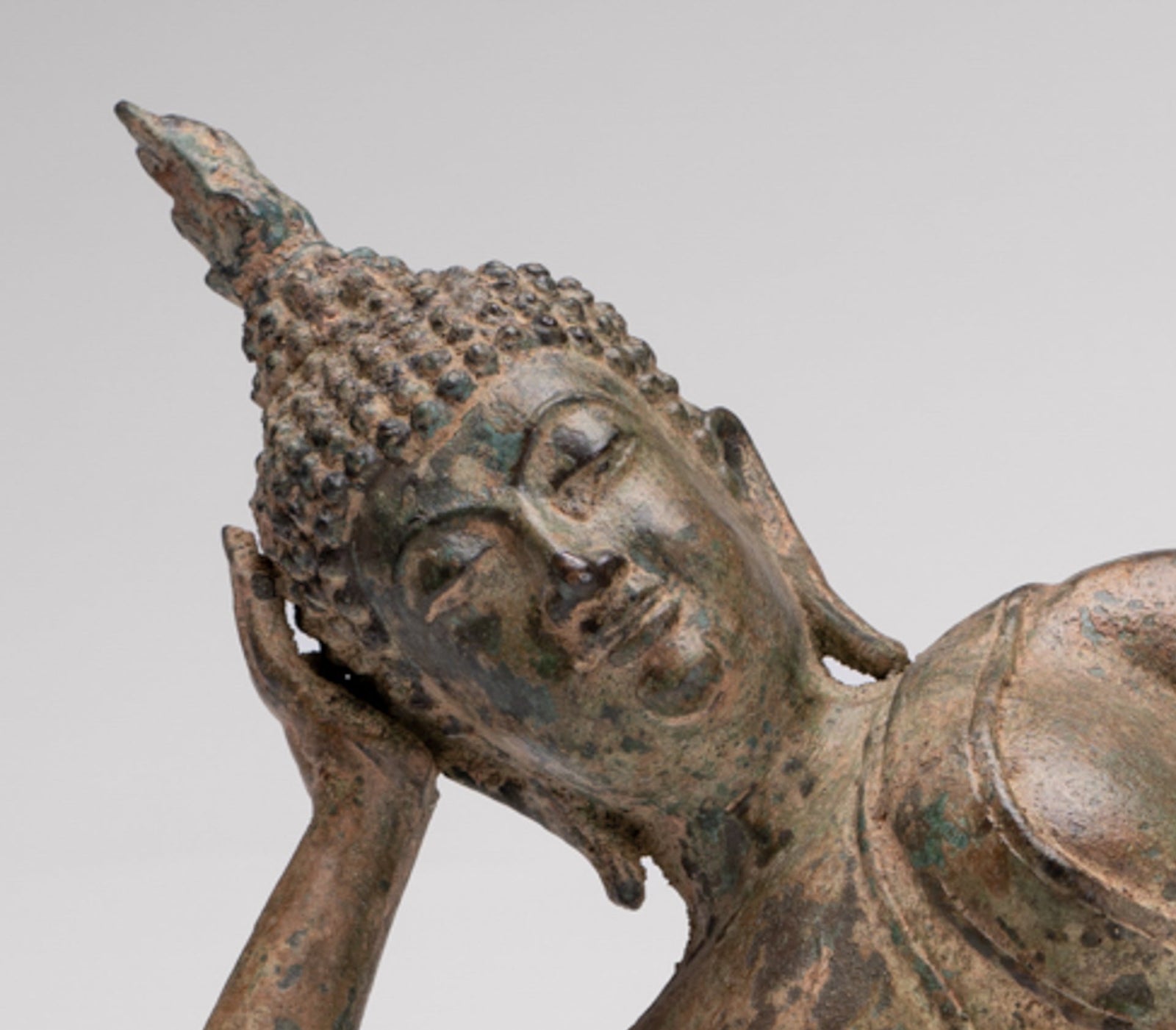
The Parinirvana of the Buddha (543 BCE): The Great Passing into Final Peace
In the tranquil groves of Kusinara (present-day Kushinagar in India), on a full moon night in 543 BCE, the Buddha lay between two sal trees, serene and composed. As his disciples gathered around him, he spoke his final words and quietly passed away. This moment, known as the Parinirvana, marks the complete liberation of the Buddha from the cycle of birth and death (samsara).
The Parinirvana is not simply a death; it is the culmination of enlightenment—a passage into the final, ineffable peace known as Nibbāna.
For Buddhists across the world, especially in Theravāda countries like Thailand and Cambodia, this sacred event is a time of remembrance, reflection, and renewal of practice.
What is Parinirvana?
The term Parinirvana (Pali: Parinibbāna) refers to the final Nibbāna attained by a fully enlightened being at the time of physical death. While the Buddha attained enlightenment (Bodhi) under the Bodhi tree in 588 BCE, he continued to live, teach, and guide others for 45 years.
During this time, although he was free from defilements and suffering, his physical body was still subject to the laws of nature. Upon his death in 543 BCE, the Buddha entered Parinirvana, bringing an end to all forms of rebirth and existence in the material world.
The Final Journey
The Buddha’s last journey is detailed in the Mahāparinibbāna Sutta of the Pāli Canon. It describes how, at the age of 80, the Buddha traveled through the region of Magadha, giving teachings and advising disciples until he reached Kusinara.
Despite illness and fatigue, he remained mindful, compassionate, and at peace. His disciples were deeply saddened, especially Ananda, his devoted attendant, who asked how the Sangha would continue without him.
The Buddha responded:
“All conditioned things are subject to decay. Strive diligently for your own liberation.”
These final words capture the essence of his message: that the path to awakening lies within each of us.
The Passing Under the Sal Trees
In the quiet of the night, the Buddha lay on his right side in the lion’s posture, between two blooming sal trees, which according to tradition shed their blossoms out of season in reverence. Surrounded by monks, lay followers, and devas, the Buddha offered his last teachings and encouraged unity and diligence in the Sangha.
As he passed into Parinirvana, the earth is said to have trembled, and even the heavens mourned. Yet, his death was not seen as a tragedy, but as a moment of transcendent peace, free from all worldly conditions.
Parinirvana in Theravāda Tradition
In Theravāda Buddhism, practiced widely in Thailand, Cambodia, Sri Lanka, and Myanmar, the Parinirvana is deeply honored, particularly on Visakha Bucha Day, which commemorates the Buddha’s birth, enlightenment, and Parinirvana, all believed to have occurred on the same full moon day of the sixth lunar month.
Common Rituals Include:
-
Meditation and chanting, especially of the Mahāparinibbāna Sutta.
-
Offerings of incense, flowers, and candles to Buddha images.
-
Candlelit processions around stupas and temples.
-
Monastic sermons recounting the Buddha’s final teachings.
In Cambodia, temples may display dramatic murals of the Buddha’s Parinirvana, often showing him reclining peacefully with grieving disciples and celestial beings surrounding him.
In Thailand, golden reclining Buddha statues such as the one at Wat Pho in Bangkok serve as powerful visual reminders of this sacred moment.
Artistic Depictions of the Parinirvana
The reclining Buddha is one of the most iconic representations in Buddhist art. In both Khmer and Thai artistic traditions, these images symbolize:
-
The peaceful transition into Parinirvana.
-
The impermanence of all things.
-
The ultimate liberation achievable through the path of Dhamma.
Such sculptures often show the Buddha lying on his right side, head resting on his hand, with a serene expression—conveying tranquility and release from all worldly suffering.
The Significance of the Buddha’s Parinirvana
1. The Completion of the Path
The Parinirvana marks the final victory over samsara. The Buddha showed that enlightenment not only frees one from suffering in life but also from the cycle of rebirth altogether.
2. A Reminder of Impermanence
The Buddha’s passing reminds us that even the most perfect being must die. This truth encourages us to live mindfully and use our time wisely.
3. The Torch Passed to the Sangha
With his final words, the Buddha passed the responsibility of the Dhamma to his disciples—and to us. His death was not an end, but a continuation of his teachings through the living community.
4. A Call to Practice
The Parinirvana is a profound call to action. It urges Buddhists to not merely worship, but to cultivate wisdom, morality, and meditation to attain peace in this life and beyond.
Reflection in Daily Life
Even today, the memory of the Buddha’s Parinirvana continues to inspire personal and communal transformation. In both urban and rural communities across Southeast Asia, lay people observe the day with:
-
Acts of generosity (dāna), such as giving food to monks or helping the poor.
-
Ethical living (sīla), often taking the Eight Precepts for the day.
-
Meditation retreats to reflect on impermanence and inner peace.
In temples, monks teach the importance of letting go—of ego, attachments, and fears—so that we may taste the freedom that the Buddha realized.
Conclusion: The Buddha’s Lasting Presence
The Parinirvana of the Buddha in 543 BCE was not an ending, but a timeless beginning. Though he left the physical world, his teachings continue to awaken hearts and minds. His life showed us how to live with compassion, his enlightenment revealed the path to liberation, and his Parinirvana showed that perfect peace is possible.
In every meditation hall, every chanting voice, and every act of mindfulness, the Buddha lives on—not in form, but in truth. His great passing reminds us that the Dhamma is eternal, and that within each of us lies the potential to reach Nibbāna.
“All conditioned things are impermanent. When one sees this with wisdom, one turns away from suffering. This is the path to purification.” – Dhammapada 277


